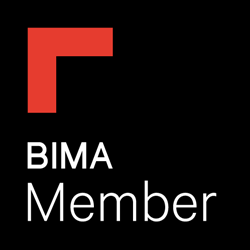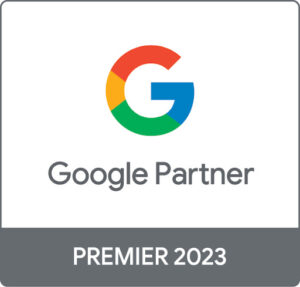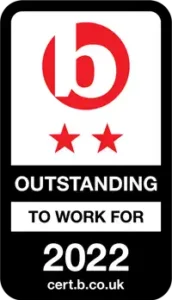Call to actions are the signposts of the Internet, strategically guiding users through web pages, apps, forms and the like to complete goals and drive interactions. Without them, we’d be all lost.
Call to actions are a huge part of the work we do. Why? Because every website has (or should have) a goal that you want your users to complete, and an effective call to action is an essential part of getting users to complete that goal.
But how do you encourage users to act? How powerful can truly effective call to actions really be? Why should you care? Keep reading to find out how to create killer call to actions that actually convert users.
Pro tip: make sure you track conversions with your call to actions to measure their success. You can do this easily combining Google Tag Manager with Google Analytics.
1. Be clear and focus on value
Users need to understand why you are asking them to complete an action, and what they will get in return for doing so. You need to show them that you understand their problems and then explain to them how your product or service solves that problem for them.
What benefits do you offer your users? You need to clearly tell them what they will get by completing your call to action. But that’s no reason to make it boring – you want to balance the emotional with compelling ad copy while effectively explaining the core value that you offer.
Take Evernote’s homepage for example…
The strapline ‘Remember Everything’ is nice and works if you know what Evernote is and what it does. But without the value proposition below, the strapline isn’t obvious enough. Your call to actions, like Evernote, need both clarity and compelling ad copy.
2. Alleviate your user’s commitment fears
Completing a call to action is a step of trust on the behalf of users. Often users are giving up something that’s valuable to them – money, personal details, time, effort, even their attention.
Naturally, users are going to have a lot of questions and concerns that need answering before they take action. Because they are giving so much away, dropping out of the funnel before they commit to purchase is very common.
The harder you make your users work, the less likely they are to complete your desired action. What can you do about this? Make it easy for them. Customer’s shouldn’t have to search for delivery charges, whether or not VAT is included, your return policy, contact information, etc.
Another great way to alleviate fears is by leveraging social proofing with user reviews. Show off why people love and trust your business. People are more likely to take action if others have before them.
3. Don’t annoy your users
Pop-ups are mostly awful, especially exit intent pop-ups. They’re just annoying. It’s totally natural for users to exit your website at some stage, so why annoy them on the way out? Earn my attention, don’t demand it.
Imagine if the same were to happen in physical shops. You wouldn’t harass your customers as they left your shop – so don’t do it on your website!
Another thing that grinds me up the wrong way is when marketers use smarmy language to manipulate actions. Don’t treat your users as if they are stupid – attempting to manipulate users only annoys them, especially if they feel like they have been tricked. The absolute worst thing you can do is trigger ‘Buyer’s Remorse’ (a sense of regret after having made a purchase).
Take this exit pop-up from Wishpond (a pop-up tools website) for example. Aside from the fact it’s an exit pop-up, which annoyed me, the call to action is actually pretty good. That is, until you read the last sentence…. No thanks, I don’t want to generate leads with pop-ups. So smarmy.
4. Scarcity encourages action
We do our best to understand how users behave on websites. Really, the most powerful and effective way to drive action is by understanding what makes your users tick. What do they care about? What’s going to entice them to complete the action?
One of the most effective ways to drive action is by creating a sense of urgency by limiting supply of a product and/or the time they have to make a decision. Why? Because people hate missing out.
- Try offering time sensitive discounts – Order within 2 hours to get an extra 10% off.
- Limiting the amount you have to offer – Hurry! Only 3 left in stock.
- Highlight how quickly you are selling out – 2 people viewing this right now.
A classic example of leveraging the scarcity bias, although slightly outdated now because people have cottoned onto it, is on EasyJet’s flight booking page.
They tell you to hurry because there are only 2 seats left at the lowest price. This pushes you to take immediate action, and despite you knowing it’s a load of tosh, you fear that if you don’t book those seats there and then, they will be gone and you will have to pay a higher price.
5. Location, location, location…
The visibility of your call to action is critical to its success too. Common sense suggests your call to actions should be placed high on the page and as obvious to the user as possible. However, visual distractions like people’s faces, moving videos and animation draw user’s attention away from the call to action, which will result in less interactions.
Try to leverage the location of your call to action to your advantage by positioning it prominently on the page. Use visual cues to steer user’s attention and draw their eyes towards your call to actions. Make sure your call to actions are located in an easy-to-find spot that follows on organically from the flow of the page.
Dating apps have rewritten the rule book on call to actions in recent years. Now, I’ve not used one but everyone knows how successful Tinder, OkCupid and the like have become. Check this one out from OkCupid – mildly amusing headline, clear value proposition that speaks to their users and then an interactive call to action right slap bang in the middle at the top of the page.
6. Timing is everything
Think about when it’s the right time to ask your user’s to complete a call to action. Ask them too early and you risk . Ask them too late and you could have lost their attention.
Call to actions are thrust on us so readily by brands. Far too often when visiting websites I’m asked to complete an action, almost desperately, before I am ready. Beware of asking your users to take action at the wrong time, it can have the adverse effect before they are ready to commit to taking action, especially if your proposition isn’t instantly clear.
Take Chapar for example. You’re greeted with a nice visually engaging page with a nice headline and value proposition. But then a load of space followed by a fairly ambiguous call to action. Such a shame! As a new user, I kind of know what they’re asking me to do and why – but no way am I ready to commit after two sentences.
7. Big, bold and clear
When it comes to call to actions, size matters. So you’d better make your call to actions big and bold!
Using colour is a highly effective way of making elements of your call to actions stand out, especially against contrasting palettes. Make sure ‘action points’ like buttons are contrasting in colour, and large and obvious enough to stand out from the rest of the page.
Use negative space around the call to action to draw attention to it. Clutter your call to action with surrounding content and it will get lost in the shuffle.
Avoid overloading your users with distractions around your call to actions. Try to limit the amount of decisions you ask your users to make. Too much choice and you’ll leave your users paralysed.
Now you could argue that this call to action is a little too simple, and I reckon it wouldn’t nearly be half as effective if it wasn’t for MailChimp, a globally recognised brand. However, there’s something to be said for how the use of negative space, the boldness and the simplicity draws the eye to the call to action so well. Thumbs up from me.
8. It’s not over ‘til it’s over
What happens once your users respond to your call to action? Where do they go? What do they see? The full journey needs to be as considered as your initial call to action because it doesn’t end after they’ve taken action.
Eliminate distractions – your users have committed now, they don’t need aggressive up-selling and they don’t need to be taken to another area of your website (other than the checkout!). You can still offer additional value by all means, just make sure it doesn’t stop them from completing the conversion process.
It’s all about streamlining – get them through the conversion process as quickly and as efficiently as possible. A one-step checkout process is a great way to encourage users to push through and finish the conversion. There’s no need to get them to sign-up to your newsletter if you then risk losing them before they become a customer!
I really love this enquiry form.
Yes, it’s fun and engaging. But what makes it so great is the amount of thought and care that has gone into the process once the user has clicked the initial call to action. They’ve fully considered the user’s journey and made the entire process a distraction-free pleasure to complete.









